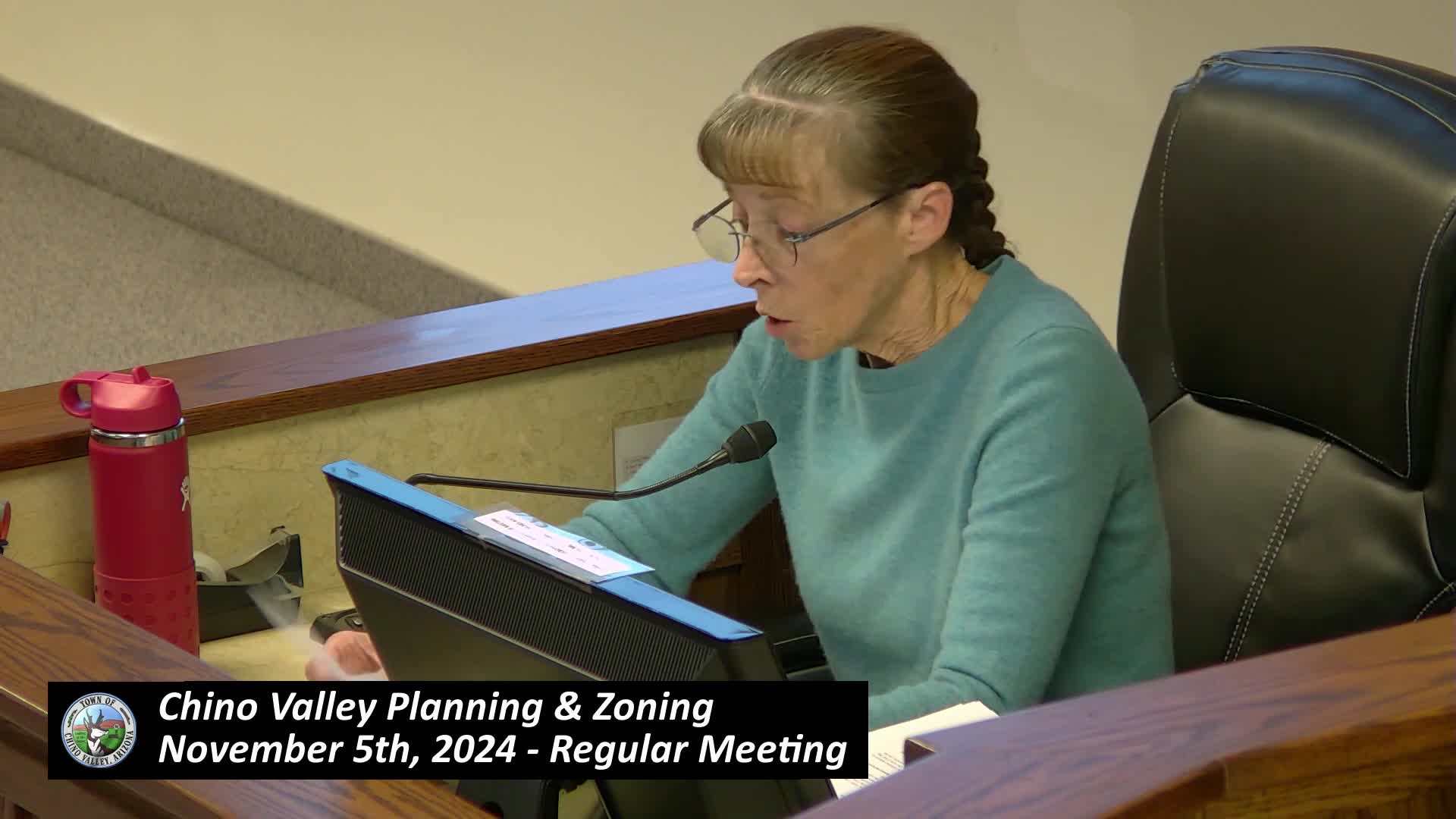Chino Valley solar committee establishes strict guidelines for new energy projects
November 06, 2024 | Chino Valley, Yavapai County, Arizona
This article was created by AI summarizing key points discussed. AI makes mistakes, so for full details and context, please refer to the video of the full meeting. Please report any errors so we can fix them. Report an error »

In the heart of Chino Valley, city officials gathered for a pivotal planning and zoning meeting on November 5, 2024, where discussions centered on the future of solar energy projects in the region. The atmosphere was charged with anticipation as representatives from Arizona Public Service (APS) shared insights into the complex world of energy brokerage, likening it to the stock market. Their presentation illuminated how energy needs are projected and how solar projects fit into this intricate framework.
The meeting marked a significant step forward in the town's efforts to establish a comprehensive ordinance governing solar energy development. After nearly a year of collaboration with a dedicated committee and consultations with legal experts, the new ordinance aims to balance the interests of potential solar developers with community concerns. Officials emphasized the importance of not excluding interested firms from the process, which could lead to legal challenges.
Key provisions of the ordinance include specific zoning classifications that allow existing projects to proceed without additional rezoning, while new projects will require adherence to strict siting criteria. A notable feature is the mandated three-mile separation between solar installations, with a buffer zone established to protect the Peavine Trail, a cherished local landmark. The committee's recommendations also included a minimum setback of 50 feet from property boundaries for solar panels and equipment, ensuring that developments remain visually unobtrusive.
One of the most debated topics was the placement of battery energy storage systems, which are crucial for managing solar energy. The committee proposed that these systems be centrally located within solar project areas or at least one mile away from residential properties, prioritizing community safety and aesthetics.
As the meeting concluded, officials underscored the importance of these regulations in shaping the future of solar energy in Chino Valley. With a cap of 3,800 acres for solar projects and stringent criteria for project approval, the town is poised to embrace renewable energy while safeguarding the interests of its residents. The discussions not only reflect a commitment to sustainable energy but also highlight the ongoing dialogue between development and community values in this growing Arizona town.
The meeting marked a significant step forward in the town's efforts to establish a comprehensive ordinance governing solar energy development. After nearly a year of collaboration with a dedicated committee and consultations with legal experts, the new ordinance aims to balance the interests of potential solar developers with community concerns. Officials emphasized the importance of not excluding interested firms from the process, which could lead to legal challenges.
Key provisions of the ordinance include specific zoning classifications that allow existing projects to proceed without additional rezoning, while new projects will require adherence to strict siting criteria. A notable feature is the mandated three-mile separation between solar installations, with a buffer zone established to protect the Peavine Trail, a cherished local landmark. The committee's recommendations also included a minimum setback of 50 feet from property boundaries for solar panels and equipment, ensuring that developments remain visually unobtrusive.
One of the most debated topics was the placement of battery energy storage systems, which are crucial for managing solar energy. The committee proposed that these systems be centrally located within solar project areas or at least one mile away from residential properties, prioritizing community safety and aesthetics.
As the meeting concluded, officials underscored the importance of these regulations in shaping the future of solar energy in Chino Valley. With a cap of 3,800 acres for solar projects and stringent criteria for project approval, the town is poised to embrace renewable energy while safeguarding the interests of its residents. The discussions not only reflect a commitment to sustainable energy but also highlight the ongoing dialogue between development and community values in this growing Arizona town.
View full meeting
This article is based on a recent meeting—watch the full video and explore the complete transcript for deeper insights into the discussion.
View full meeting
